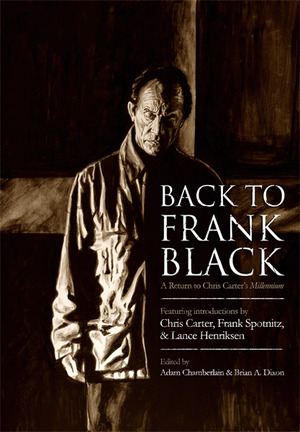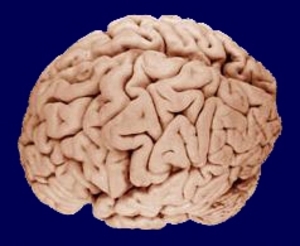Awhile back Jason Cangialosi and I presented our picks for the 10 Essential Films of the Decade. If you read either Jason’s or my article, you may have noticed that no animated films made the list. That is because both Jason and I believed that the first decade of the millennium was a very fertile period for animation. Animated movies provided moviegoers with some of the best storytelling and most sophisticated thematic concepts of the decade and so we agreed that animation should be set aside in a category of its own to do the decade of work justice.
The first five presented are Jason Cangialosi’s essential selections for Feature length Animated Films, followed by my own 5 picks. Jason takes on the art house animated films of the decade while I take a look at those films directed toward the family moviegoing experience. The combined list of Animated Films presents a balanced and diverse list of 10 Essential Animated Films of the Decade: An Animation Retrospective. Jason has a lovely introduction to his version of this article, so do me a solid and give him a page view by clicking here.
“Waking Life” (2001)
Philosophical speaking, Richard Linklater’s Rotoscoped foray into lucid dreaming and existentialism is a head trip worth taking. The raw footage was filmed and then layered by animators frame by frame with rotoscoping. Innovator Bob Sabiston invented Rotoshop for the film; merging the technique of Rotoscoping and the capabilities of Photoshop. What results is an encompassing slice of modern philosophical clichés brought beautifully to life, as the conversations of Wiley Wiggins (“Dazed and Confused”) unravel in a full blown stream of animation. Linklater gives us an animated experience that is a dream-like acid trip in questioning the meaning of existence and reality itself. One of the most unique film experiences of the past decade and then some.
“Spirited Away” (2001)
Aside from being an exotic fantasy inspired through a deeply personal tale, this masterpiece from animation god Hayao Miyazaki was globally acclaimed. It took the Oscar for Best Animated Feature (a first for Anime and Japan), several Festival awards and became the highest grossing Japanese film in history. That’s not why “Spirited Away” is essential for me; it was the first Anime film that truly riveted my emotional core.
“The Triplets of Belleville” (2003)
In a decade run amok with brilliant dialogue (ie. Charlie Kaufman, Wes Anderson, Tarantino, Aaron Sorkin), it took an animated feature to remind me that Film is a medium of showing-not-telling. Without a single line of meaningful dialogue, Sylvain Chomet’s feature debut, “The Triplets of Belleville”, spins a tale both worldly and intimate about family, determination and being enslaved by passion. Its animation is surreal, but comforting; its story dark, but uplifting. For a lot of people the music makes this animated film; from the eccentric melodies created by refrigerator, vacuum and bicycle spokes to the sweeping use of Bach and Mozart. Yet, the film derives its energy from the confluence of being everything an animated film should be.
“5 Centimeters Per Second” (2007)
Painting with light’ is a term cinematographers aspire to in capturing a film’s meaning through light and shadows. While the light of Makoto Shinkai’s animated “5 Centimeters Per Second is truly painted, it is my hope that the film’s use of light will inspire cinematographers. While Miyazaki’s “Spirited Away” transcended Anime to another level for me, Shinkai was the rocket boost to another dimension. This came not in creating a world made more fantastical through Anime, but in capturing the realism of human relationships, struggles and the unmerciful passage of time. The textured treasures of light, color and depth seen in the animation, truly reflect a textured story of depth.
“Waltz with Bashir” (2008)
It may seem that most of my choices in Animated films are attempts to capture reality in unforeseen ways. If that’s the case than Ari Folman’s autobiographical animated documentary, “Waltz with Bashir” takes the cake. The resounding success of this film may very well carve a defining notch in the virtually untouched subgenre of Animated Documentary Films. “Waltz with Bashir” is not only one of the best documentary films and animated films of the past decade, but one of the most important war films released in tumultuous times. The film traverses Folman’s struggle to remember his time as an Israeli Solider in the Lebanese Civil War. The film is sometimes mistaken for using rotoscoping like Linklater, but is animated by an innovative technique developed by animator Yoni Goodman that merges classic animation with Adobe technologies. In a film about how memories haunt us, “Waltz with Bashir” has embedded a cinematic memory that still haunts me.
Hoodwinked (2006)
Hoodwinked! is the Big One that got away. While reviewers were making fools of themselves heaping praise on the instantly forgettable Ratatouille, they failed to discern the deeper implications of this retelling of the Little Red Riding Hood story. Hoodwinked! proved that a family-driven animated film could be just as radical an attack on capitalist values as a film by Jean-Luc Godard. Hoodwinked! also traces its essential cache back to Akira Kurosawa and his method of using diverse perspectives to tell the same story in the classic film Rashomon. Follow this link to my article that deconstructs how Hoodwinked turns from a movie that questions the validity of absolute truth into a movie that maintains an absolute truth: capitalism that doesn’t regulate against monopoly is detrimental to society.
The Simpsons Movie (2007)
The Simpsons Movie is one of the essential movies of the first decade of the 21st Century for the same reason that this 20-year-old show remain the essential television program: it is the only popular entertainment entity to consistently question the leadership (so-called) of America in the post-Clinton years. The Simpsons Movie manages to subvert these preciously held American beliefs: movie stars make good Presidents, the Patriot Act protects us from terrorists, America’s communications companies aren’t unofficial arms of the National Security Agency, Fox News presents fair and balanced coverage and George W. Bush respected the Constitution during his tenure as America’s second appointed President. The Simpsons Movie is also essential because it contains the single greatest voiceover acting scene in movie history: Julie Kavner deserved an Oscar for the scene when Homer is watching the video the family left behind when they left him behind in Alaska .
UP (2009)
Until UP, Finding Nemo was my favorite Pixar flick. You have to include a Pixar movie when discussing essential animated movies because Pixar redefined the genre. UP not only blows away Finding Nemo, but I argue that it should have been awarded the Oscar for Best Movie over the overrated The Hurt Locker as well as the so-boring-I-turned-the-DVD-off Avatar. What really make UP essential viewing-especially for studio executives-is that it proves that if you have a good story, kids will even flock to see a movie about a senior citizen.
Lilo and Stitch (2002)
I have often forwarded the argument that this movie would have been just as interesting if Stitch had never entered and it had kept its focus solely on the relationship between Lilo and her big sister. Lilo is THAT fascinating a character. What really make Lilo and Stitch essential viewing, however, is that it may be the last great example of a dead art form: traditional cell animated movies. I think when I look back on the first decade of the 21st Century there will be two characters that I remember most vividly: Daniel Plainview from There Will Be Blood and Lilo. And remember, always, that Pudge controls the weather.
The Fantastic Mr. Fox (2009)
The Fantastic Mr. Fox is essential viewing because it is the representative model of an animation art form that was revolutionized during the first decade of the 21st Century: stop motion animation. It came down to a choice between Coraline and The Fantastic Mr. Fox. Coraline is a great movie, but ultimately I think The Fantastic Mr. Fox is a more essential film. For one thing, The Fantastic Mr. Fox is yet another example of what 10 years ago I never in a million years thought I would commit to print: George Clooney is one of the finest comedic actors since Cary Grant quit making movies. (It still hurts a a little to have to admit!) The choice of music in The Fantastic Mr. Fox is second only to Donnie Darko for being absolutely essential to the thematic construction of the movie.





